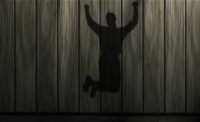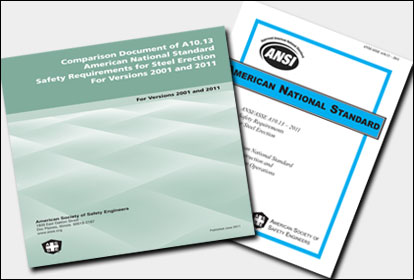As part of the crew that was pre-lighting a scene where one of the characters gets killed in an explosion, I spent several hours helping rig an elevator shaft for the special effects team. The elevator was in good working condition and was one of two still being used by the building’s predominantly older residents, until we had our way with it. Because it was a difficult shot to pull off, we spent the majority of the day building braces, barriers, and other ways to protect the cast and crew.
The action would take place in the elevator car three floors below us. Everything seemed to be coming together and nobody seemed particularly worried. The fire marshal was even on hand, and the elevator shaft roof doors were opened to help with ventilation.
After a few rehearsals and lots of discussion between the director, the cameraman and the special effects coordinator, they decided it was time to roll film. I perched myself around the corner from the elevator vestibule where the camera was stationed and prepared for a well-choreographed stunt, or so I thought.
A runaway fireball
As the SFX (Special Effects) coordinator gave the command to his technician to detonate the charge, I listened intently for the sound of an M80 or some other primer charge. All I heard was a little “pop” that sounded like a firecracker. I laughed to myself, “dud.” Seconds later, nobody was laughing. Like a runaway fireball from below, the delayed explosion ripped through the elevator shaft with enough force to blast a hole in the wall of an adjoining restaurant.With quick reflexes and a little luck, I was able to come out of the ordeal with only some singed eyebrows. The cameraman and associate producer were not as fortunate. Before the wayward fire receded back into the elevator shaft, it had engulfed both of them in flames. Trust me, there’s nothing quite like the sight of a man running down the hall on fire and screaming to earn a spot in your memory bank. Smoke filled the corridors instantly, and many disoriented seniors who lived there came out of their apartments to see what was going on. Nobody had bothered to inform the residents in advance of the filming, adding quite a bit of confusion to the situation. With the help of some furniture pads and some quick thinking, the flames were extinguished in time to save lives. During the chaos, I managed to steer the cameraman toward a service elevator at the other end of the building and down to a waiting ambulance. Both he and the associate producer survived.
Dust was the culprit
So what went wrong? How did a bunch of seasoned professionals screw up so badly? Dust. The elevator shaft hadn’t been cleaned in quite a while, and the excessive dust that had accumulated over the years was ripe for conflagration. It seems that the dust provided the perfect electrostatic environment. Perhaps the charge was also too big for the space, or it may have been ignited without the proper calculations made in advance.Whatever the case, somebody didn’t do his homework. He simply didn’t factor in the dust, or if he did, he seriously underestimated its potential to magnify the blast. Although no one was killed, many people suffered from smoke inhalation and there was a considerable amount of property damage, too.
Where does the responsibility lay for such a debacle? Most people would tend to blame the SFX coordinator and rightfully so. I was amazed that the producers instructed him to leave the scene immediately to avoid being hounded by the news teams that began to show up. They also told the crew not to talk to anybody about what happened.
In the final analysis, it was probably a case of ignorance more than neglect. Even veterans make mistakes, but when coupled with a director’s zeal for flashy footage, the results can be disastrous. That’s what makes the film business such a dangerous one. During my 15-year tenure as a grip and set electrician, I had several near misses with equipment malfunctions, and often found myself working with high-voltage lighting in wet and rainy conditions. Not a good combination I thought, so I left “ the biz” with a slightly battered psyche but original “operating equipment” still intact.





